--- title: "What Is the Marketing Action Plan? (and How To Write One)" author: "Jackie Peng" tags: Content slug: marketing-action-plan description: "Discover key steps for a successful marketing action plan: setting SMART goals, using digital whiteboards for planning, tracking campaign progress, integrating CRM leads and analyzing sales responses for improved ROI. Ideal for marketing professionals aiming for efficiency and effectiveness." created: 2024-01-04 updated: 2025-01-04 layout: blog publish: true ---  Consider John Smith, a marketing planning manager in the United States, who has everyday obstacles due to the lack of a defined [marketing action plan](https://affine.pro/blog/crafting-an-effective-one-page-marketing-plan-a-step-by-step-guide). His office exemplifies organized chaos: desks are piled with numerous reports and documents, and his team members wander around in a disorganized fashion. Each member appears to be working in isolation, with no overarching direction or strategy. The lack of a unified plan not only stifles productivity but also fosters a sense of uneasiness among the team members. John is painfully aware of the impact of this disorder. He recognizes that their efforts may not yield the expected results without a clear, planned approach. His team's effort has been dispersed and unproductive due to a lack of clear goals and meaningful steps. This disarray and lack of clear direction severely alarm John. It emphasizes the critical necessity for a well-developed marketing action plan - a road map that will align his team's efforts, ensuring everyone is working toward a common goal and making the department's efforts more effective. ## What is the Marketing Action Plan?  A marketing action plan is a strategic roadmap that outlines a company's marketing actions over a given time period. It comprises explicit goals, target audience identification, specific strategies and tactics, a timetable, financial allocations, key performance indicators (KPIs) to measure success, and facilities for analysis and adjustment. This plan directs the marketing team's efforts to meet particular business objectives in an efficient and effective manner. ## What are the elements of a marketing action plan? A marketing action plan is critical for driving business growth and guaranteeing effective brand promotion. Here are the main elements to include: * Create Your Plan - Define your marketing objectives, identify your target audience, and outline the strategies and approaches you will employ. This step provides the framework for your marketing initiatives. * Plan for Measurement - Decide how you will track and assess achievement by identifying key performance indicators (KPIs) that are relevant to your goals. This aids in improving marketing efforts and calculating ROI. * Execute the strategy. Implement the marketing initiatives and strategies described in your plan. This phase consists of content production, advertising, social media interaction, and other promotional initiatives. By combining these factors, organizations can develop a systematic and results-driven marketing action plan that improves visibility, increases engagement, and drives sales. ## How to write a marketing action plan? ### 1) [Create Your Plan with AFFiNE whiteboard](https://app.affine.pro)  Developing a marketing action plan necessitates an organized strategy, and using the SMART principle is critical for defining specific, attainable targets. The process can be considerably improved by adopting a digital whiteboard, which provides a collaborative and visual planning environment. * Particular: Use a digital whiteboard for collaborative brainstorming to create particular objectives. For example, visually map out "Increase online sales by 20% in 3 months" on the board, utilizing the text and drawing features to ensure clarity. * Quantifiable: Create an area on the digital whiteboard to record quantifiable metrics. If the goal is to increase engagement, make a chart on the board to track social media interactions and provide a clear visual of success. * Achievable: Use a whiteboard to assess target feasibility. List the resources and actions required for a campaign, then use the board's tools to compare them to your goals to ensure they are reasonable and doable. * Relevant: On the digital whiteboard, relate marketing goals to the entire corporate plan. If the goal is market expansion, use the whiteboard to connect marketing objectives, such as consumer outreach, to the overall goal. * Time-bound: Use the whiteboard's timeline function to set deadlines. Plot major milestones for your marketing operations on a digital timeline, providing a visual roadmap to guarantee that each activity is completed on time. This also helps to keep the entire team on schedule. ### 2) [Plan for Measurement in AFFiNE whiteboard](https://app.affine.pro) 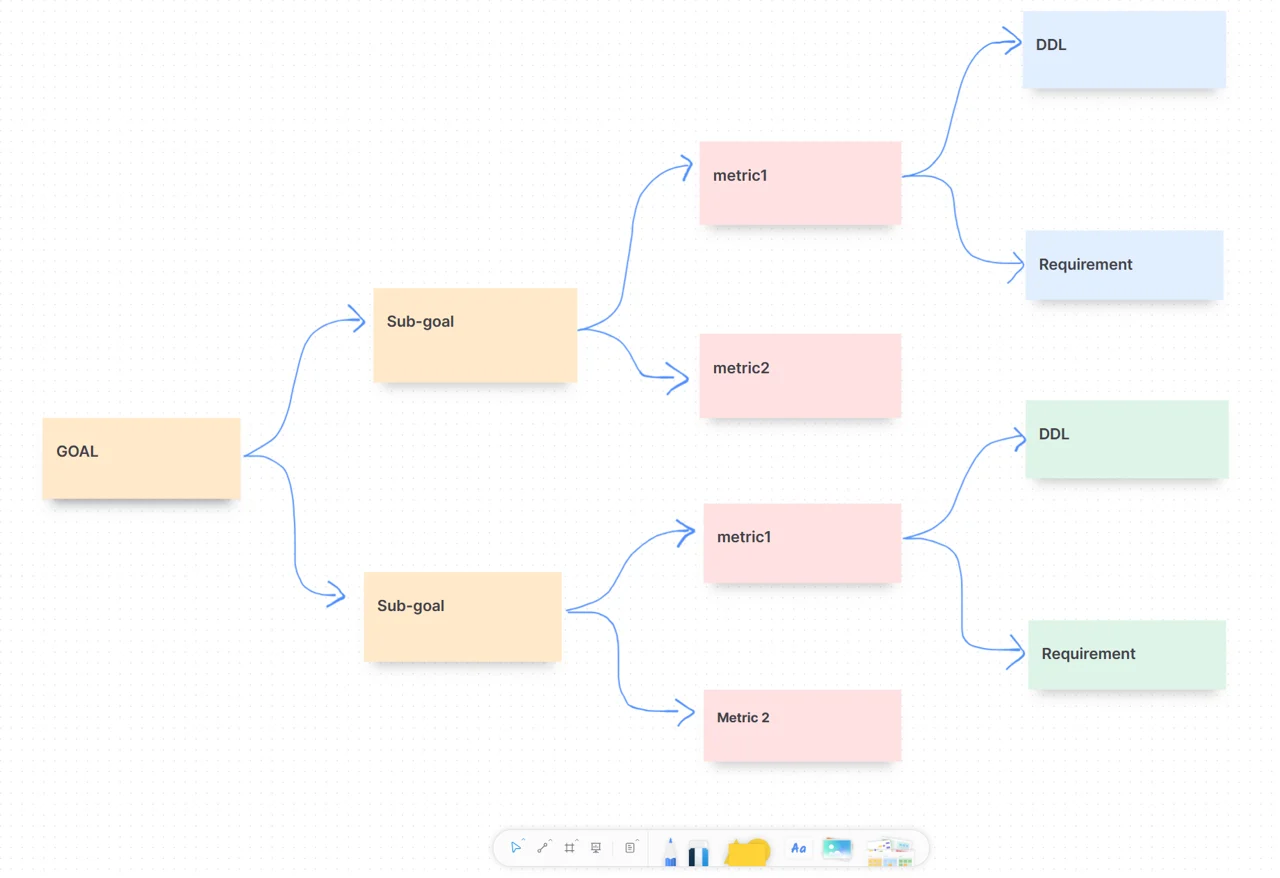 * Identify Key Performance Indicators (KPIs). Begin by creating a list of key performance indicators (KPIs) relevant to your marketing objectives on a digital whiteboard. For example, if you want to raise brand awareness, you could use KPIs such as website traffic, social media followers, or engagement rates. The whiteboard's adaptable surface enables for easy arrangement and change of these KPIs as your campaign progresses. * Design a Measurement Dashboard: Using the digital whiteboard, design a visual dashboard to track these KPIs. You can create charts or graphs directly on the board, which can be updated in real time as data arrives. This dynamic visual depiction makes it simpler to track trends and patterns across time. * Schedule regular review meetings using the digital whiteboard as the focal point for discussion. During these sessions, you can check the dashboard, discuss performance indicators, and add annotations or changes immediately on the board. This collaborative approach guarantees that the entire team is in sync and responsive to the data. **Wanna get started with this layout right away,** [click here](https://app.affine.pro)**!** ### 3) [Execute within AFFiNE whiteboard](https://app.affine.pro)  * Executing your marketing action plan effectively can be streamlined and enhanced using a digital whiteboard, providing a central, interactive platform for implementation: * Launch Campaigns: Utilize the digital whiteboard to visualize and kick off your marketing campaigns. For example, if launching a new product, you can create a flowchart on the whiteboard outlining each step of the launch process, from initial announcement to follow-up strategies. This visual aid helps ensure every team member understands their role and the sequence of activities. * Coordinate Team Efforts: The digital whiteboard serves as a collaborative space where team members can update their progress in real-time. Assign tasks directly on the board, and use color-coding or markers to indicate task status. This feature keeps everyone on the same page and allows for easy tracking of who is doing what. * Centralize Resources and Materials: Upload and store campaign materials such as graphics, content calendars, and ad copies on the whiteboard. This central repository makes it easy for team members to access and use the correct, up-to-date resources, ensuring consistency across all marketing channels. * Integrate Timelines: With digital whiteboards, you can integrate project timelines or Gantt charts. This integration allows the team to see how their individual tasks fit into the broader campaign timeline, helping to maintain a clear sense of urgency and pacing. **Wanna get started with this layout right away,** [click here](https://app.affine.pro)**!** 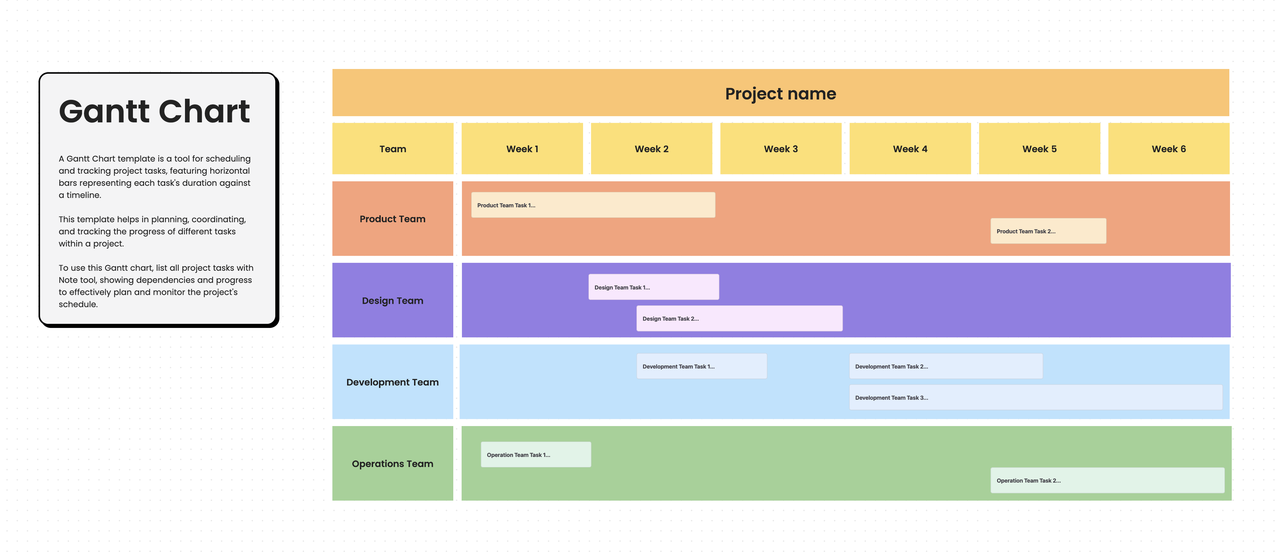 * Real-time Collaboration and Feedback: The whiteboard enables real-time collaboration, which is particularly beneficial for remote or distributed teams. Team members can provide instant feedback on campaign elements, make suggestions, or flag issues, facilitating swift resolution and decision-making. **Wanna get started with this layout right away,** [click here](https://app.affine.pro)**!** ### 4) Track, Measure, Monitor, and Assess 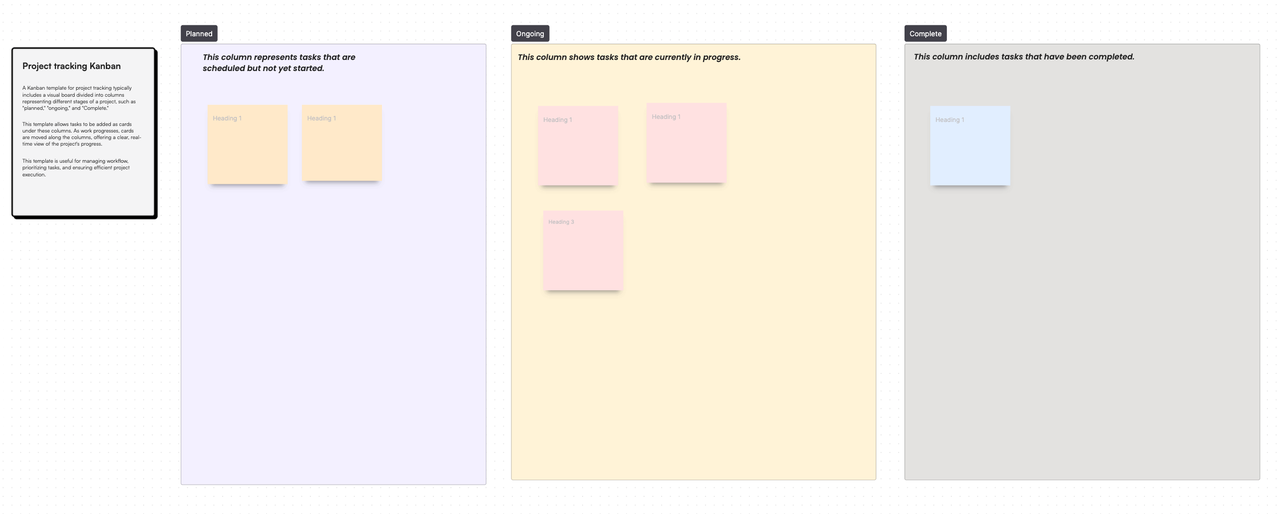 After executing a marketing action plan, the crucial next step is the integration and tracking of leads within your on-demand [CRM software](https://www.larksuite.com/en_us/blog/best-crm-software). This process involves capturing contact information from various sources such as phone calls, emails, web forms, or mailed-in reply cards, and then systematically adding or linking these leads to the relevant CRM campaign. * Accurate Lead Capturing: As leads come in, ensure they are accurately captured in the [CRM system](https://www.folk.app/articles/best-crm-lead-management). This could involve direct input of details for new leads or matching incoming information to existing records in the CRM database. The precision in this step is vital for the subsequent analysis of the campaign's effectiveness. * Associating Leads with Campaigns: Carefully link each lead to the specific marketing campaign that generated it. This step is critical for measuring the campaign's success, as it allows for a clear understanding of which marketing efforts are yielding results. * Monitoring Lead Input and Integration: Continuously monitor the process of lead input and integration into the CRM. This involves checking for accuracy in how leads are being recorded and ensuring that they are correctly associated with their respective campaigns. * Early Sales Response Assessment: In the initial weeks following the campaign, start assessing the sales response. This early evaluation often provides a good indication of the campaign's effectiveness in terms of the number of leads generated. * Comprehensive Sales Response Evaluation: Within a reasonable timeframe, such as 60 days from the first lead response, conduct a thorough evaluation. This should include an analysis of the total number of leads generated and how they have converted into sales or desired actions. * Utilizing Established Measurement Criteria: Refer back to the measurement criteria established in the planning phase to evaluate the campaign's performance. Compare the actual results with the set targets to gauge the success and areas for improvement. ### 5) Evaluate, Adapt, and Improve  As your marketing action plan progresses and generates most of its sales response, you can start to more accurately forecast its final sales outcomes and get an early sense of its financial return. This is particularly relevant in B2B contexts where sales cycles can span several months from lead generation to the actual purchase decision. While it might be challenging to calculate a precise final return on investment (ROI) immediately, you can estimate the final sales response, such as the number of leads generated and the cost-per-inquiry, after a few weeks. * Project Final Sales Response: With time, as the bulk of the sales response materializes, use the data to project the campaign's final sales impact. This involves analyzing lead generation numbers and the associated costs. * Early Financial Return Indication: Even in the initial stages, you can start gauging the financial return of the campaign. This early assessment helps in understanding the effectiveness of the campaign in monetary terms. * Compare with Previous Campaigns: By comparing the current campaign’s response to that of previous campaigns, you can determine its relative success. This comparison provides a clearer picture of whether the campaign was successful, fell short, or achieved moderate results. Prepare for Varied Outcomes: Especially in new markets, industries, or with new product launches, responses may not always meet initial projections. Smart marketing professionals anticipate this possibility and are prepared to analyze both positive and negative results. * Identify Underlying Causes: If a campaign underperforms, it’s important to investigate both its marketing and product-related causes. Understanding these factors is crucial for making informed adjustments. Revise and Improve: Based on the analysis, revise and improve the campaign. This might involve tweaking marketing messages, targeting strategies, or even aspects of the product itself. * Rapid Re-Execution: Once improvements are made, quickly relaunch the campaign. The goal is to get the refined campaign back into the market as swiftly as possible to capitalize on the learnings and generate a better sales response. * Iterative Improvement: View each campaign as part of an ongoing learning process. Each iteration offers valuable insights that can be used to enhance future marketing efforts. ## AFFiNE: Your Ultimate Partner helping you to write your marketing action plan 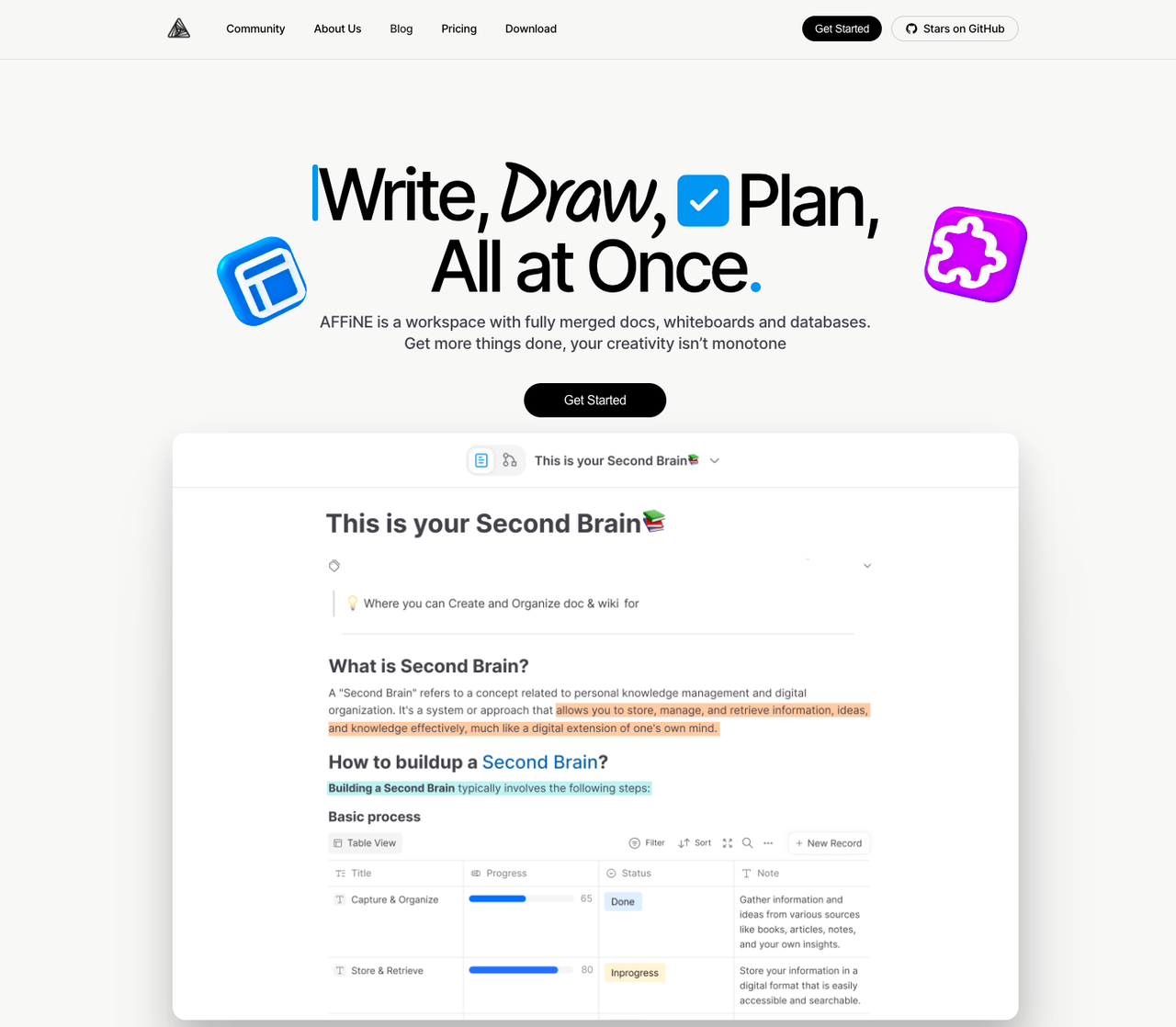 AFFiNE is a versatile editor that lets you write, draw, plan, and present all in one place. Easily capture detailed information about your new business using the page mode, allowing for straightforward document editing. Efficiently organize your projects by using a database to keep track of deadlines, assign responsibilities, and effortlessly monitor project progress. Take advantage of AFFiNE's powerful whiteboard feature to brainstorm ideas with your team. Moreover, craft visually appealing posters about your business for seamless publication and display on different social media platforms. AFFiNE offers a user-friendly platform for comprehensive business management and seamless team collaboration. <div style="text-align:center;"> <iframe width="560" height="315" src="https://www.youtube.com/embed/3cfeKOufZWU?si=IiXDIdwfnM2Z7KPL" title="YouTube video player" frameborder="0" allow="accelerometer; autoplay; clipboard-write; encrypted-media; gyroscope; picture-in-picture; web-share" allowfullscreen></iframe> </div> ### Advanced Collaboration Capability When you do need to [collaborate](https://affine.pro/blog/top-asynchronous-communication-tools-free-2024) with other contributors to discuss your concept map, AFFiNE makes getting feedback simple. Appealing collaboration capability provides visibility into assigned tasks, making tables easier to estimate, and ensuring your concept map remains well-designed. You can invite team members or classmates to collaborate on concept maps together, making it perfect for group projects or study sessions. 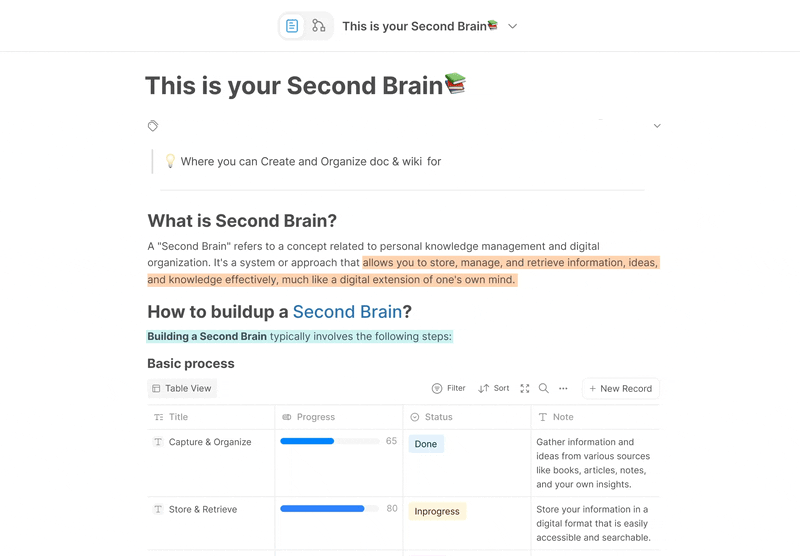 With top-notch software like AFFiNE at your disposal along with its diverse range of templates and user-friendly features, creating concept maps has never been easier or more effective. Commence concept mapping by using AFFiNE's user-friendly tool. Presently, **AFFiNE** has launched its **[Stable Version](https://affine.pro/download)**, with ongoing efforts to develop a more comprehensive and dependable iteration. Join us on our voyage through our social media channels and be part of the experience. **Come and join us on our journey over on our media platforms. 🚀** |Column 1|Title| |---|---|
title: "What Is the Marketing Action Plan? (and How To Write One)"
author: "Jackie Peng"
tags: Content
slug: marketing-action-plan
description: "Discover key steps for a successful marketing action plan: setting SMART goals, using digital whiteboards for planning, tracking campaign progress, integrating CRM leads and analyzing sales responses for improved ROI. Ideal for marketing professionals aiming for efficiency and effectiveness."
created: 2024-01-04
updated: 2025-01-04
layout: blog
publish: true

Consider John Smith, a marketing planning manager in the United States, who has everyday obstacles due to the lack of a defined marketing action plan. His office exemplifies organized chaos: desks are piled with numerous reports and documents, and his team members wander around in a disorganized fashion. Each member appears to be working in isolation, with no overarching direction or strategy. The lack of a unified plan not only stifles productivity but also fosters a sense of uneasiness among the team members.
John is painfully aware of the impact of this disorder. He recognizes that their efforts may not yield the expected results without a clear, planned approach. His team's effort has been dispersed and unproductive due to a lack of clear goals and meaningful steps. This disarray and lack of clear direction severely alarm John. It emphasizes the critical necessity for a well-developed marketing action plan - a road map that will align his team's efforts, ensuring everyone is working toward a common goal and making the department's efforts more effective.
What is the Marketing Action Plan?

A marketing action plan is a strategic roadmap that outlines a company's marketing actions over a given time period. It comprises explicit goals, target audience identification, specific strategies and tactics, a timetable, financial allocations, key performance indicators (KPIs) to measure success, and facilities for analysis and adjustment. This plan directs the marketing team's efforts to meet particular business objectives in an efficient and effective manner.
What are the elements of a marketing action plan?
A marketing action plan is critical for driving business growth and guaranteeing effective brand promotion. Here are the main elements to include:
- Create Your Plan - Define your marketing objectives, identify your target audience, and outline the strategies and approaches you will employ. This step provides the framework for your marketing initiatives.
- Plan for Measurement - Decide how you will track and assess achievement by identifying key performance indicators (KPIs) that are relevant to your goals. This aids in improving marketing efforts and calculating ROI.
- Execute the strategy. Implement the marketing initiatives and strategies described in your plan. This phase consists of content production, advertising, social media interaction, and other promotional initiatives. By combining these factors, organizations can develop a systematic and results-driven marketing action plan that improves visibility, increases engagement, and drives sales.
How to write a marketing action plan?
1) Create Your Plan with AFFiNE whiteboard

Developing a marketing action plan necessitates an organized strategy, and using the SMART principle is critical for defining specific, attainable targets. The process can be considerably improved by adopting a digital whiteboard, which provides a collaborative and visual planning environment.
- Particular: Use a digital whiteboard for collaborative brainstorming to create particular objectives. For example, visually map out "Increase online sales by 20% in 3 months" on the board, utilizing the text and drawing features to ensure clarity.
- Quantifiable: Create an area on the digital whiteboard to record quantifiable metrics. If the goal is to increase engagement, make a chart on the board to track social media interactions and provide a clear visual of success.
- Achievable: Use a whiteboard to assess target feasibility. List the resources and actions required for a campaign, then use the board's tools to compare them to your goals to ensure they are reasonable and doable.
- Relevant: On the digital whiteboard, relate marketing goals to the entire corporate plan. If the goal is market expansion, use the whiteboard to connect marketing objectives, such as consumer outreach, to the overall goal.
- Time-bound: Use the whiteboard's timeline function to set deadlines. Plot major milestones for your marketing operations on a digital timeline, providing a visual roadmap to guarantee that each activity is completed on time. This also helps to keep the entire team on schedule.
2) Plan for Measurement in AFFiNE whiteboard

- Identify Key Performance Indicators (KPIs). Begin by creating a list of key performance indicators (KPIs) relevant to your marketing objectives on a digital whiteboard. For example, if you want to raise brand awareness, you could use KPIs such as website traffic, social media followers, or engagement rates. The whiteboard's adaptable surface enables for easy arrangement and change of these KPIs as your campaign progresses.
- Design a Measurement Dashboard: Using the digital whiteboard, design a visual dashboard to track these KPIs. You can create charts or graphs directly on the board, which can be updated in real time as data arrives. This dynamic visual depiction makes it simpler to track trends and patterns across time.
- Schedule regular review meetings using the digital whiteboard as the focal point for discussion. During these sessions, you can check the dashboard, discuss performance indicators, and add annotations or changes immediately on the board. This collaborative approach guarantees that the entire team is in sync and responsive to the data. Wanna get started with this layout right away, click here!
3) Execute within AFFiNE whiteboard

- Executing your marketing action plan effectively can be streamlined and enhanced using a digital whiteboard, providing a central, interactive platform for implementation:
- Launch Campaigns: Utilize the digital whiteboard to visualize and kick off your marketing campaigns. For example, if launching a new product, you can create a flowchart on the whiteboard outlining each step of the launch process, from initial announcement to follow-up strategies. This visual aid helps ensure every team member understands their role and the sequence of activities.
- Coordinate Team Efforts: The digital whiteboard serves as a collaborative space where team members can update their progress in real-time. Assign tasks directly on the board, and use color-coding or markers to indicate task status. This feature keeps everyone on the same page and allows for easy tracking of who is doing what.
- Centralize Resources and Materials: Upload and store campaign materials such as graphics, content calendars, and ad copies on the whiteboard. This central repository makes it easy for team members to access and use the correct, up-to-date resources, ensuring consistency across all marketing channels.
- Integrate Timelines: With digital whiteboards, you can integrate project timelines or Gantt charts. This integration allows the team to see how their individual tasks fit into the broader campaign timeline, helping to maintain a clear sense of urgency and pacing. Wanna get started with this layout right away, click here!

- Real-time Collaboration and Feedback: The whiteboard enables real-time collaboration, which is particularly beneficial for remote or distributed teams. Team members can provide instant feedback on campaign elements, make suggestions, or flag issues, facilitating swift resolution and decision-making. Wanna get started with this layout right away, click here!
4) Track, Measure, Monitor, and Assess

After executing a marketing action plan, the crucial next step is the integration and tracking of leads within your on-demand CRM software. This process involves capturing contact information from various sources such as phone calls, emails, web forms, or mailed-in reply cards, and then systematically adding or linking these leads to the relevant CRM campaign.
- Accurate Lead Capturing: As leads come in, ensure they are accurately captured in the CRM system. This could involve direct input of details for new leads or matching incoming information to existing records in the CRM database. The precision in this step is vital for the subsequent analysis of the campaign's effectiveness.
- Associating Leads with Campaigns: Carefully link each lead to the specific marketing campaign that generated it. This step is critical for measuring the campaign's success, as it allows for a clear understanding of which marketing efforts are yielding results.
- Monitoring Lead Input and Integration: Continuously monitor the process of lead input and integration into the CRM. This involves checking for accuracy in how leads are being recorded and ensuring that they are correctly associated with their respective campaigns.
- Early Sales Response Assessment: In the initial weeks following the campaign, start assessing the sales response. This early evaluation often provides a good indication of the campaign's effectiveness in terms of the number of leads generated.
- Comprehensive Sales Response Evaluation: Within a reasonable timeframe, such as 60 days from the first lead response, conduct a thorough evaluation. This should include an analysis of the total number of leads generated and how they have converted into sales or desired actions.
- Utilizing Established Measurement Criteria: Refer back to the measurement criteria established in the planning phase to evaluate the campaign's performance. Compare the actual results with the set targets to gauge the success and areas for improvement.
5) Evaluate, Adapt, and Improve

As your marketing action plan progresses and generates most of its sales response, you can start to more accurately forecast its final sales outcomes and get an early sense of its financial return. This is particularly relevant in B2B contexts where sales cycles can span several months from lead generation to the actual purchase decision. While it might be challenging to calculate a precise final return on investment (ROI) immediately, you can estimate the final sales response, such as the number of leads generated and the cost-per-inquiry, after a few weeks.
- Project Final Sales Response: With time, as the bulk of the sales response materializes, use the data to project the campaign's final sales impact. This involves analyzing lead generation numbers and the associated costs.
- Early Financial Return Indication: Even in the initial stages, you can start gauging the financial return of the campaign. This early assessment helps in understanding the effectiveness of the campaign in monetary terms.
- Compare with Previous Campaigns: By comparing the current campaign’s response to that of previous campaigns, you can determine its relative success. This comparison provides a clearer picture of whether the campaign was successful, fell short, or achieved moderate results. Prepare for Varied Outcomes: Especially in new markets, industries, or with new product launches, responses may not always meet initial projections. Smart marketing professionals anticipate this possibility and are prepared to analyze both positive and negative results.
- Identify Underlying Causes: If a campaign underperforms, it’s important to investigate both its marketing and product-related causes. Understanding these factors is crucial for making informed adjustments. Revise and Improve: Based on the analysis, revise and improve the campaign. This might involve tweaking marketing messages, targeting strategies, or even aspects of the product itself.
- Rapid Re-Execution: Once improvements are made, quickly relaunch the campaign. The goal is to get the refined campaign back into the market as swiftly as possible to capitalize on the learnings and generate a better sales response.
- Iterative Improvement: View each campaign as part of an ongoing learning process. Each iteration offers valuable insights that can be used to enhance future marketing efforts.
AFFiNE: Your Ultimate Partner helping you to write your marketing action plan

AFFiNE is a versatile editor that lets you write, draw, plan, and present all in one place. Easily capture detailed information about your new business using the page mode, allowing for straightforward document editing. Efficiently organize your projects by using a database to keep track of deadlines, assign responsibilities, and effortlessly monitor project progress.
Take advantage of AFFiNE's powerful whiteboard feature to brainstorm ideas with your team. Moreover, craft visually appealing posters about your business for seamless publication and display on different social media platforms. AFFiNE offers a user-friendly platform for comprehensive business management and seamless team collaboration.
Advanced Collaboration Capability
When you do need to collaborate with other contributors to discuss your concept map, AFFiNE makes getting feedback simple. Appealing collaboration capability provides visibility into assigned tasks, making tables easier to estimate, and ensuring your concept map remains well-designed. You can invite team members or classmates to collaborate on concept maps together, making it perfect for group projects or study sessions.

With top-notch software like AFFiNE at your disposal along with its diverse range of templates and user-friendly features, creating concept maps has never been easier or more effective. Commence concept mapping by using AFFiNE's user-friendly tool.
Presently, AFFiNE has launched its Stable Version, with ongoing efforts to develop a more comprehensive and dependable iteration. Join us on our voyage through our social media channels and be part of the experience. Come and join us on our journey over on our media platforms. 🚀
| Column 1 | Title |
|---|